Key takeaways
- Local museum workshops enhance learning through hands-on experiences, making history tangible and engaging for children.
- Participating in museum activities as a family fosters shared memories and encourages creativity, while strengthening family bonds.
- Choosing age-appropriate workshops tailored to children’s interests keeps them engaged and excited about learning.
- Post-workshop activities at home, such as recreating crafts or storytelling, help reinforce what children learned and maintain their curiosity.
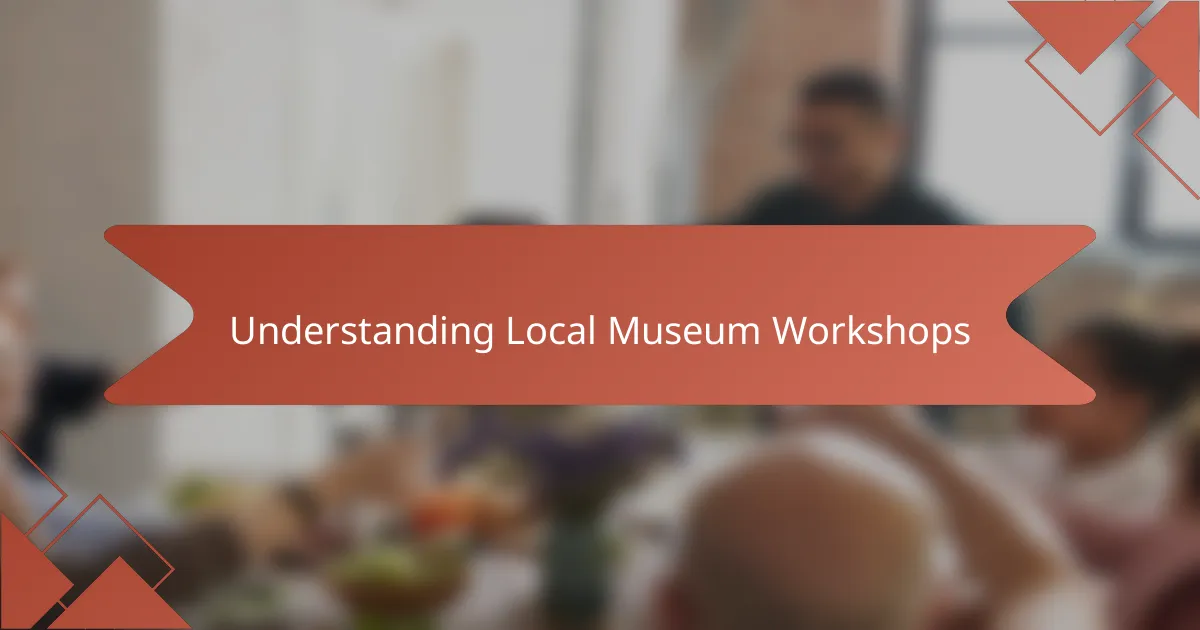
Understanding Local Museum Workshops
Local museum workshops are more than just classes—they are immersive experiences designed to spark curiosity and creativity. I remember taking my kids to one where they got to handle ancient pottery shards; seeing their eyes light up made me realize how tangible history becomes through hands-on learning.
Have you ever wondered why such workshops hold kids’ attention better than textbooks? It’s because these sessions combine visual, tactile, and auditory elements, making learning dynamic and memorable. For my family, this approach transformed museum visits from merely sightseeing into adventurous explorations.
What’s fascinating is how these workshops often cater to different age groups and interests, which means there’s something meaningful for every child. From crafting activities to storytelling sessions, the variety keeps engagement high, helping my children connect personally with the exhibits and stories around them.
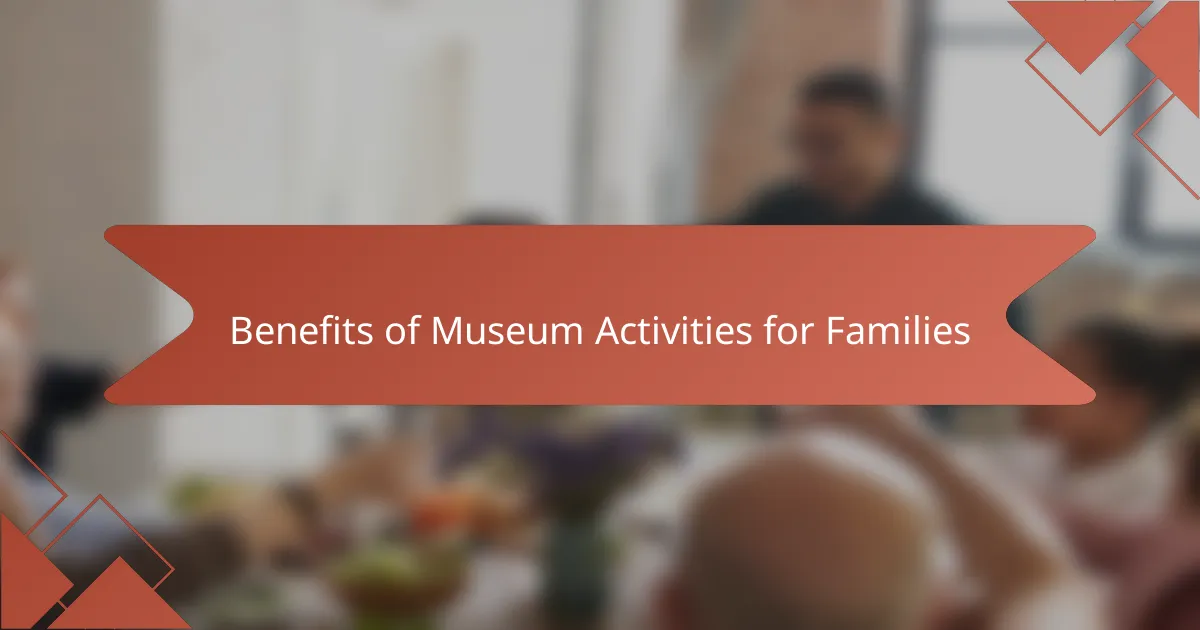
Benefits of Museum Activities for Families
There’s something truly special about sharing museum activities as a family. When we participate together, it feels like we’re creating a shared memory, not just watching from the sidelines. I’ve noticed that these moments often spark conversations long after we leave, making learning a natural part of our daily lives.
Have you ever seen your child’s creativity bloom in an unexpected way? During one workshop, my daughter surprised me by inventing her own story inspired by an ancient artifact. It made me realize that museums can be a fertile ground for imagination, encouraging kids to think beyond facts and dates.
Besides the obvious educational perks, museum activities bring us closer as a family. There’s a unique joy in discovering something new side-by-side, and it often leads to laughter, questions, and shared excitement. These experiences have become some of my family’s most cherished traditions.
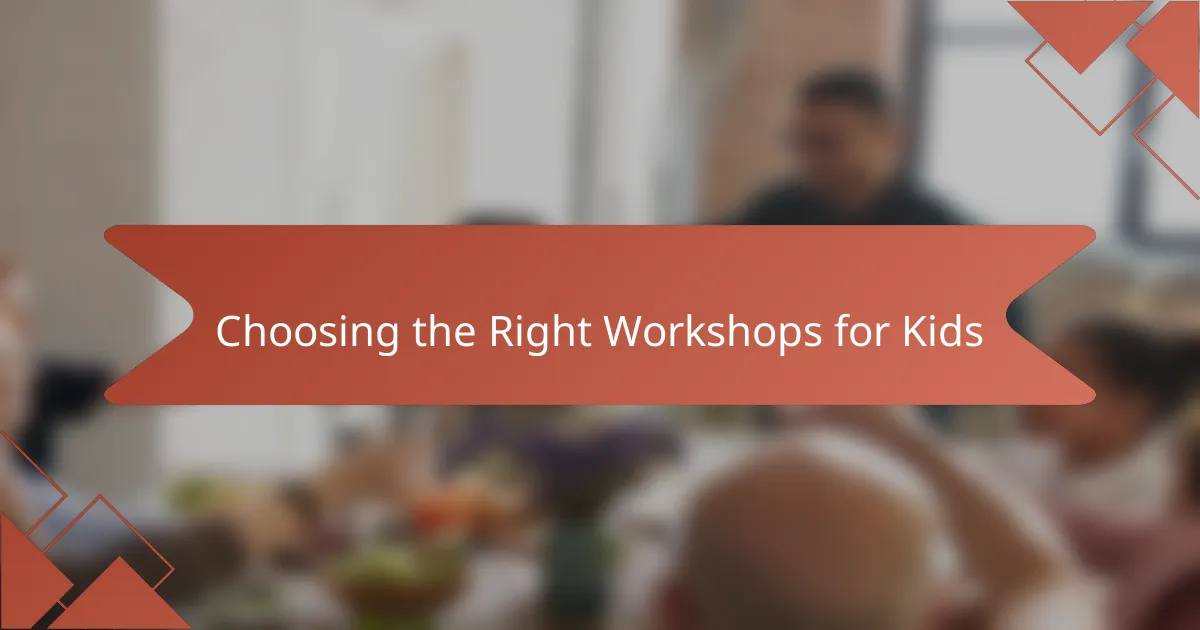
Choosing the Right Workshops for Kids
Choosing the right workshop often starts with knowing what truly excites your child. I’ve found that paying attention to their interests—whether it’s dinosaurs, ancient art, or science experiments—makes all the difference. When my son picked a fossil excavation workshop, his enthusiasm was contagious, and he talked about it for weeks.
Age suitability is another key factor. Have you noticed how some workshops are tailored specifically for certain age groups? I learned this the hard way when my youngest found a kids-only session too advanced, which made her lose interest quickly. Now, I always check the recommended age to ensure the activities match their developmental level.
It also helps to consider the workshop format: hands-on crafts, guided storytelling, or interactive games. My daughter thrives in sessions where she can create something with her hands, like painting or building models. Recognizing this helped me choose workshops that kept her engaged and proud of her accomplishments.
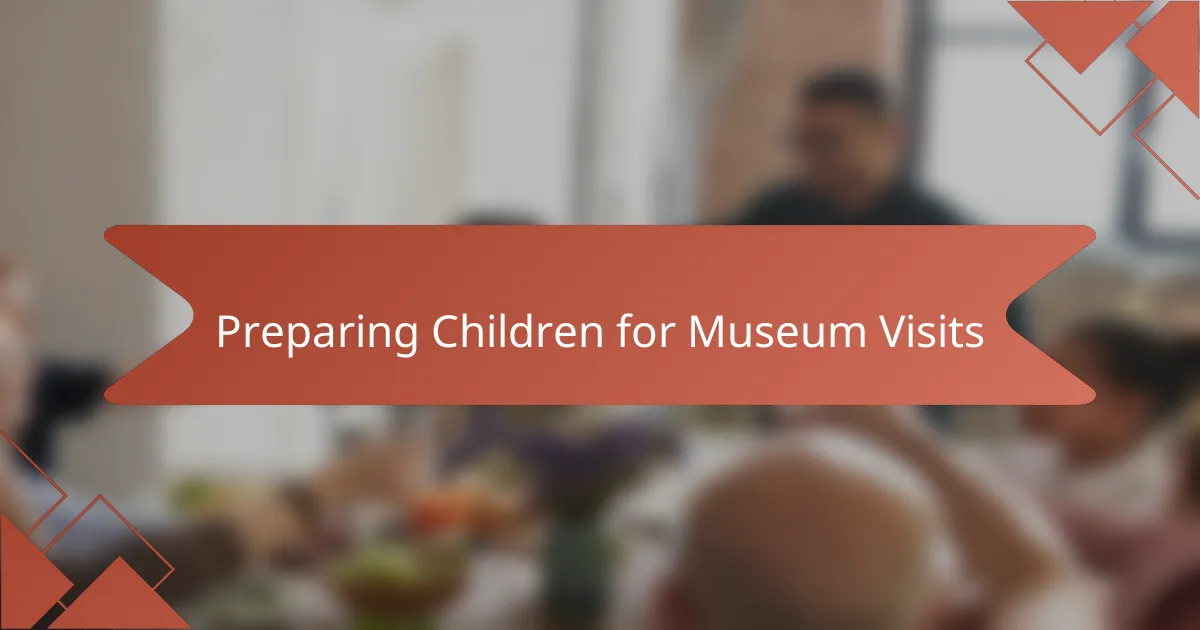
Preparing Children for Museum Visits
Getting my kids ready for a museum visit usually starts with a little chat at home. I ask them what they’re excited to see or learn, which gets them thinking and builds anticipation. Have you tried doing this? It really sets the tone and makes the whole experience feel like a fun adventure rather than a chore.
I’ve also found that prepping them with a simple rundown of what to expect helps ease any worries. For instance, explaining that they might walk a lot or that some workshops involve touching artifacts reassures them and prevents surprises. Once, my son was hesitant about sitting still during a storytelling session, but knowing what was coming made it easier for him to settle in and enjoy.
Bringing along a small notebook or camera has been a game changer, too. My kids love jotting down their favorite parts or snapping pictures, which keeps them engaged throughout the visit. It’s amazing how this little extra step turns their role from passive observers to active explorers. Have you noticed that effect with your children?
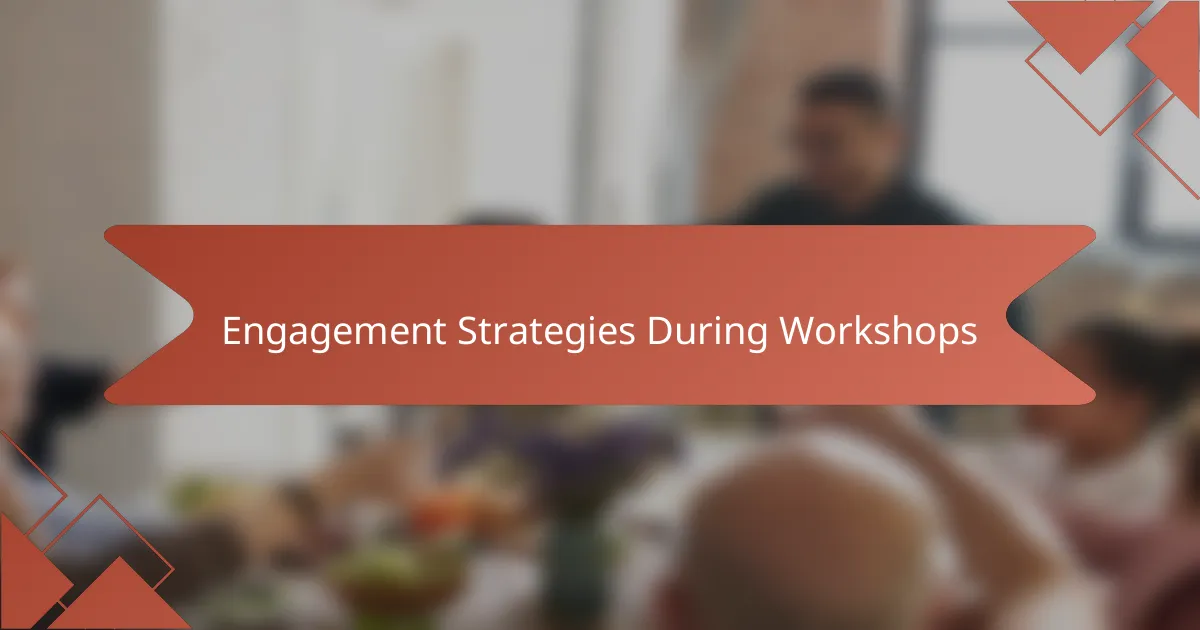
Engagement Strategies During Workshops
One strategy I found effective during workshops was encouraging my children to ask questions—not just follow instructions. When my son started wondering why certain tools were used for artifact restoration, it sparked a deeper discussion that kept him engaged far beyond the scheduled activity. Have you noticed how curiosity can turn a simple task into an exciting discovery?
I also noticed that giving my kids small roles, like helping the instructor or sharing their thoughts with the group, boosted their confidence and attention. During a storytelling workshop, my daughter was thrilled to act out a character, which made the whole experience more immersive and memorable for her. It’s amazing how responsibility can transform their engagement.
Sometimes, mixing quiet reflection with active participation worked wonders. After a hands-on activity, we’d take a moment to sit together and talk about what we learned or felt. These pauses helped my children process information and stay emotionally connected throughout the workshop. Do you think kids need this balance to stay fully engaged? In my experience, the answer is a resounding yes.
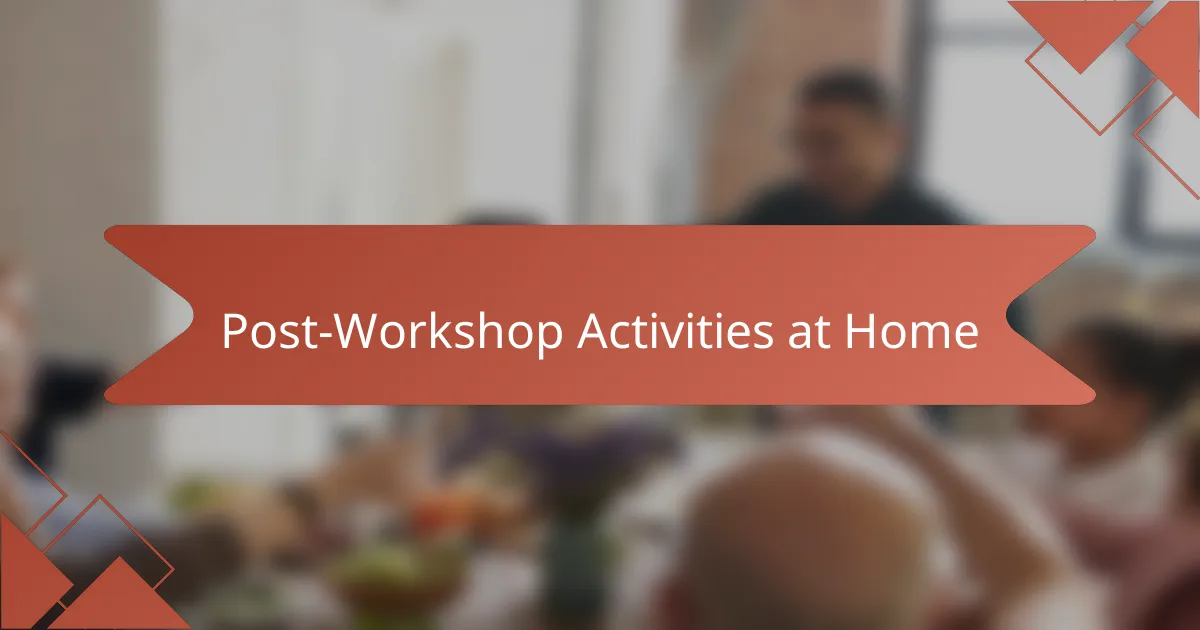
Post-Workshop Activities at Home
After each museum workshop, we like to bring a little bit of that magic home. For example, my kids often recreate the crafts they made during the session using household materials, which helps them remember and personalize what they learned. Have you ever seen your child’s pride when they show off their “museum project” to family members? It’s a simple but powerful way to keep the experience alive.
Sometimes, we dive deeper into the subjects covered by reading related children’s books or watching documentaries together. I’ve noticed that connecting the workshop themes to everyday life sparks more questions and curiosity in my kids. It’s like the workshop opened a door, and we’re exploring the rooms behind it at our own pace.
On other days, we use art or storytelling to express what stuck with them from the workshop. My daughter once wrote a poem inspired by an ancient artifact she learned about, which gave me a beautiful glimpse into how her mind was working. Have you tried encouraging your children to tell their own stories after such experiences? It can reveal so much about how they internalize history and culture.

Sharing Our Family Workshop Experience
Sharing our family workshop experience always feels like revisiting a treasure trove of memories. I recall one afternoon when my kids eagerly gathered around the exhibit table, their hands busy molding clay as they recreated ancient pottery. Watching their concentration and the pride in their smiles truly made me appreciate how these workshops turn abstract history into something personal and alive.
Have you ever noticed how participating together changes the dynamic entirely? It’s not just about the kids learning; it’s about us connecting through shared discovery. After a recent workshop, my son excitedly recounted facts he never mentioned before, sparking a lively family dinner conversation that lasted well into the evening.
Sometimes, it’s the little moments that stick with me most—like when my daughter’s eyes widened as she heard a story behind an artifact, or when my youngest proudly showed off her handmade creation. Those experiences remind me how museums, through workshops, become more than places to visit—they become spaces where our family’s curiosity grows hand in hand.